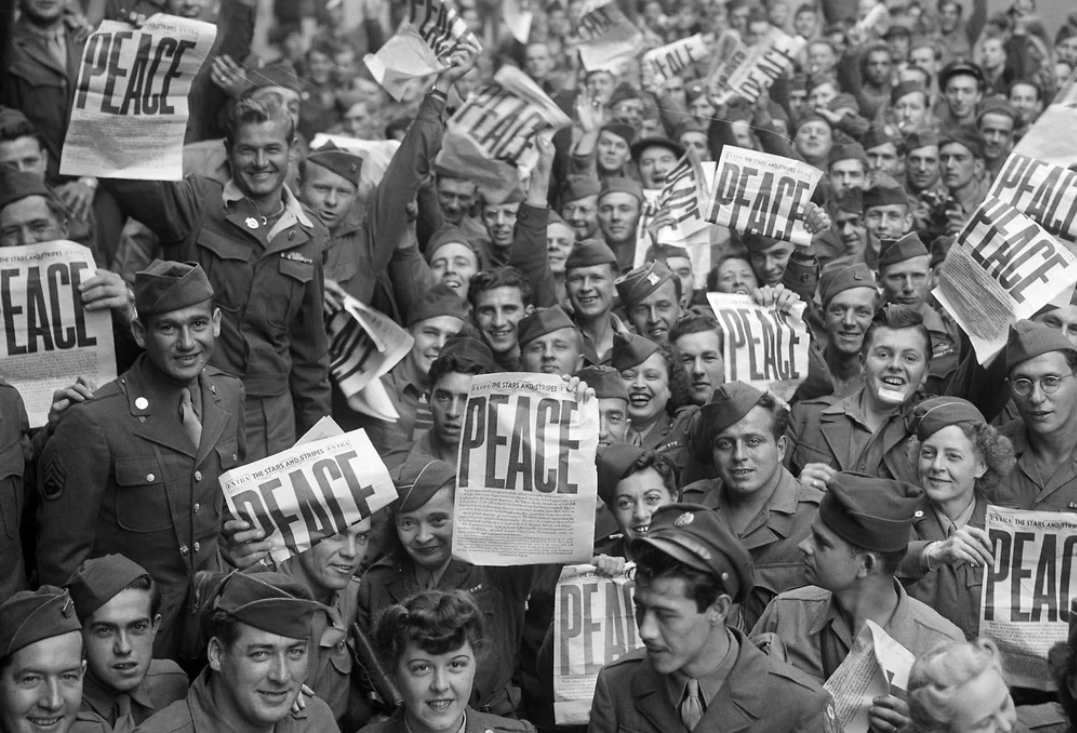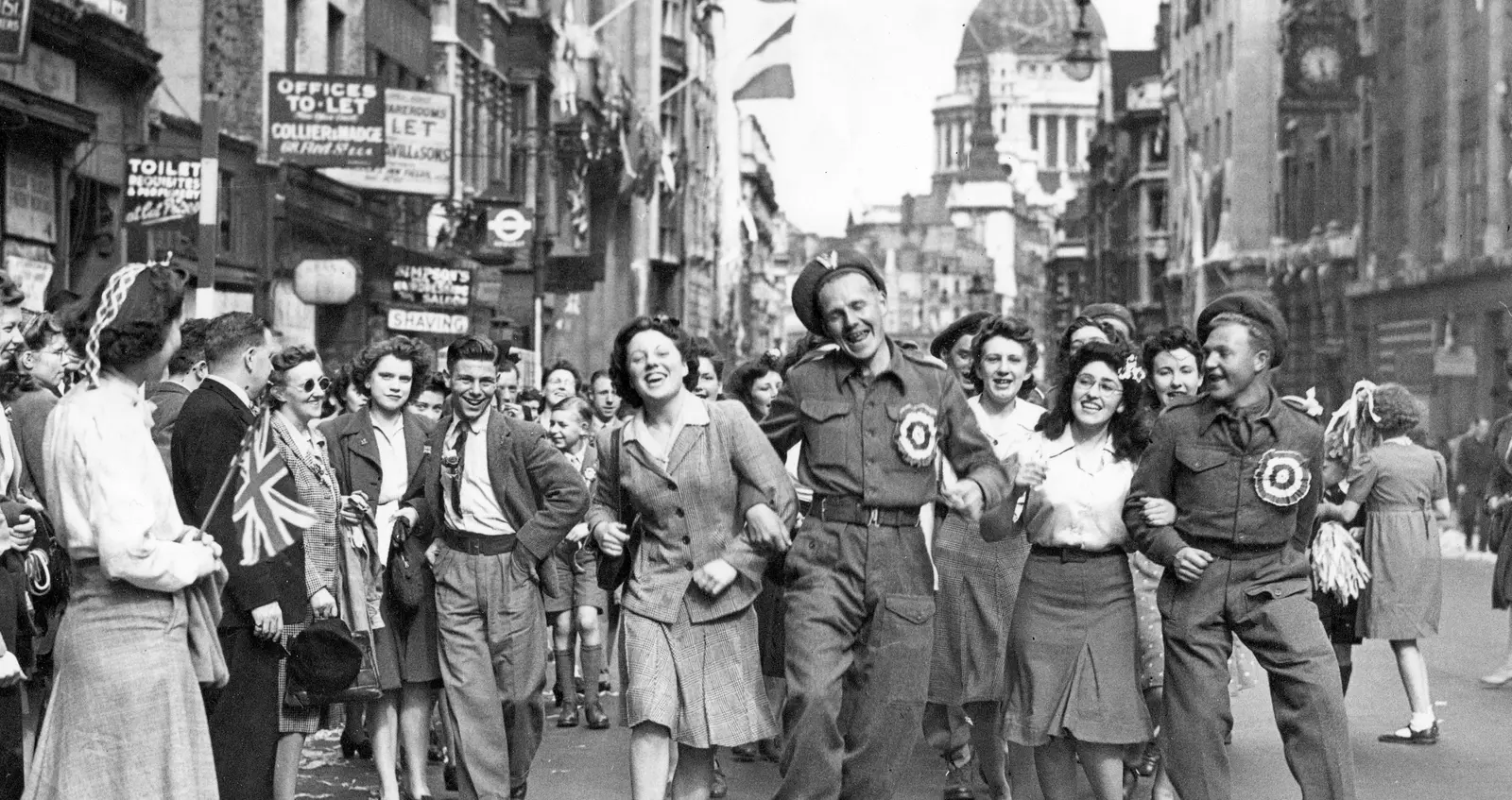
May 8, 1945, marked one of the most significant days in the history of the 20th century. On this day, the Allied forces officially declared victory over Nazi Germany, bringing an end to years of brutal conflict in Europe.
The date became known as V-E Day, short for Victory in Europe Day, and it symbolized the culmination of countless sacrifices, battles, and unyielding determination by the Allied forces.
The day was marked by celebrations across the world, especially in Europe and the United States, as people rejoiced in the defeat of the tyrannical Nazi regime that had wrought havoc on the continent for nearly six years.
For the soldiers who fought in the war, V-E Day was a moment of relief and a well-deserved acknowledgment of their hard work and bravery. However, the road to victory in Europe had been long, with brutal fighting that claimed millions of lives.
From the beaches of Normandy to the trenches of Italy, from the bombed cities of London to the cold plains of Russia, the war in Europe had been fought on multiple fronts, each one characterized by unimaginable hardships and sacrifices.
May 8, 1945, was not just a day of celebration—it was a day to honor the extraordinary efforts of those who had fought and died for the cause of freedom and justice.
The Road to Victory
The road to V-E Day began on September 1, 1939, when Germany, led by Adolf Hitler, invaded Poland. This act of aggression triggered World War II, drawing many countries into the conflict.
Over the next six years, the war expanded to involve nearly every major power in the world. Germany’s aggressive expansionism, backed by fascist ideologies, threatened the peace and stability of the entire globe.
In response, the Allied powers—principally the United States, the Soviet Union, and the United Kingdom—formed a coalition to fight back against the Axis powers, which included Germany, Italy, and Japan.
The war in Europe was fought on multiple fronts, and while each theater of conflict had its own unique challenges, the Allies faced an uphill battle against the formidable German military machine.
Germany’s occupation of much of Europe in the early years of the war made it difficult for the Allies to mount an effective counterattack. However, as the war dragged on, the tides slowly turned in favor of the Allies, beginning with key victories in North Africa and Italy.
The D-Day landings on June 6, 1944, marked a turning point in the war. The successful invasion of Normandy by American, British, and Canadian forces opened a new front in Western Europe and began the liberation of Nazi-occupied France.
The Allies advanced through France, liberating cities and towns, and pushing German forces back toward Germany itself. Meanwhile, the Soviet Union was making significant gains on the Eastern Front, where they had been fighting the Nazis since 1941.
By early 1945, Germany was facing a two-front war, with the Allies closing in from both the west and the east.
In January 1945, the Allies launched a final push into Germany. The Soviet Red Army had already captured Warsaw and was advancing through Poland, while American and British forces were advancing from the west.
The German military, weakened by years of combat and facing overwhelming Allied forces, began to crumble. Hitler’s refusal to surrender led to increasingly desperate last-ditch efforts to defend the Fatherland, but these were ultimately in vain.

The Final Assault on Germany
The battle to liberate Germany itself was long and arduous. The Allies faced fierce resistance from German troops who fought with everything they had to defend their homeland. Major battles, such as the Battle of the Bulge in December 1944, slowed the Allies' advance, but the tide had already turned.
The Allies had overwhelming numerical and technological superiority, and they were able to cut off Germany’s supply lines and surround key cities.
One of the most significant moments in the final assault was the Battle of Berlin, which took place in April 1945. The Soviet Red Army encircled the city, and after days of brutal urban combat, they captured the German capital.
The fall of Berlin symbolized the end of the Nazi regime and the defeat of Adolf Hitler. Shortly after, on April 30, 1945, Hitler committed suicide in his bunker, marking the definitive end of the Nazi leadership.
With Berlin in Soviet hands and German resistance collapsing, the Allied forces continued to push into the heart of Germany. The German high command, realizing that defeat was imminent, sought an unconditional surrender to end the war.
On May 7, 1945, Germany officially signed the surrender documents, and on May 8, 1945, the surrender was formally announced, marking the end of the war in Europe.

V-E Day Celebrations
When the announcement came that Nazi Germany had surrendered, joy and relief swept across the world. In London, crowds flooded the streets, cheering and waving Union Jacks as they celebrated the end of years of suffering under the shadow of war.
In Paris, people poured into the streets in jubilation, celebrating their liberation after nearly four years of occupation. Across the Atlantic, in New York City and Washington, D.C., Americans celebrated the hard-fought victory, while the Soviet Union held massive celebrations in Moscow, where Joseph Stalin and the Red Army were hailed as key contributors to the Allied victory.
In the United States, President Harry S. Truman addressed the nation, expressing both triumph and solemnity as he praised the bravery of the American military and the sacrifices made by American civilians during the war.
The victory in Europe was a major turning point, but it was not yet the end of the war. The Pacific Theater still raged on, with Japan showing no signs of surrender.
Despite this, V-E Day was a moment for the world to pause and reflect on the tremendous sacrifices made by soldiers, civilians, and leaders alike in the fight against tyranny.
For the American soldiers who had fought in Europe, V-E Day was both a victory and a moment of relief. They had survived some of the most brutal combat of the war, and the prospect of returning home or being sent to the Pacific was now on their minds.
The soldiers had fought and bled in Normandy, in the streets of Paris, in the forests of Germany, and the cities of Italy. They had faced unimaginable hardships, but on May 8, 1945, they could finally say that their mission was accomplished.

Legacy of Victory in Europe
The victory in Europe was not just a military triumph; it was the result of the efforts of countless individuals from different countries, all working together to defeat a common enemy.
The victory also marked the beginning of the post-war era, which saw the rebuilding of Europe, the creation of the United Nations, and the emergence of the United States and the Soviet Union as global superpowers.
For many, V-E Day represents the triumph of freedom over tyranny, democracy over dictatorship, and hope over despair. The defeat of Nazi Germany allowed for the liberation of millions of people from oppression, and it paved the way for a new world order.
The legacy of those who fought in Europe remains relevant today as a reminder of the costs of war and the importance of standing up against injustice.
While V-E Day marked the end of the war in Europe, the fight against tyranny was far from over. The war in the Pacific would continue for several more months, but V-E Day remains one of the most significant milestones in the history of World War II.
It symbolized the end of Nazi domination in Europe and the beginning of a new era of peace and reconstruction. For the soldiers, families, and nations who endured the war, V-E Day was a moment of hope and a reminder that, even in the darkest times, victory was possible.
-1749719291-q80.webp)
-1749571768-q80.webp)
-1749635988-q80.webp)
-1749551472-q80.webp)